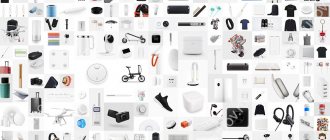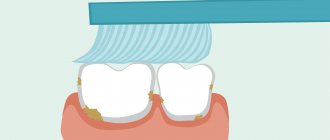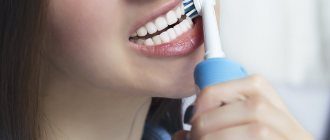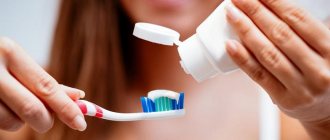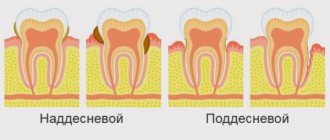How to brush teeth with braces?
After installing braces, it is very important to familiarize yourself with the basic rules of oral care.
They include recommendations for proper brushing of teeth, as well as other techniques. While wearing braces, it is very important to adhere to a special diet that excludes the consumption of solid foods. They can get stuck under the archwire and negatively affect the health of your teeth. It should be remembered that even the best oral hygiene is not enough. It is often impossible to clean all the most inaccessible places yourself with a brush. That is why experts recommend visiting your dentist once every three months for professional cleaning. During this procedure, all plaque from the enamel is removed, and a stone can also be removed, if any has appeared. This is done using ultrasound.
Important! After installing the braces system, it is necessary to obtain advice from the attending orthodontist regarding the care of braces, choosing a brush and oral hygiene. Each case is individual, so only a specialist can choose the most competent recommendations.
Cleaning technique
The most important stage of oral care after installing braces is proper cleaning using special brushes. At the initial stage, it can take a long time and cause slight discomfort. It will take a certain period of time for a person to get used to a new cleaning technique and to choose suitable brushes and products. However, later this procedure will become commonplace.
The cleaning technique in each case has the same algorithm and consists of the following steps:
- First, you need to clean the surface of your teeth using a special orthodontic brush. Thanks to the grooves in its bristles, it does not catch on the braces themselves and cleans the tooth efficiently. In this case, the movements should first be circular and then vertical. In total, it is enough to make 10-15 movements in each segment of the dentition.
- Next, you need to clean the surface of the teeth that do not have braces. To do this, you can use a regular toothbrush and carry out this procedure in the usual way for a person.
- Floss should be used to remove food debris from the spaces between the teeth. To do this, you must first insert the thread under the arch and then place it in the desired interdental space. This will allow you to clean without damaging the bracket. For high-quality cleansing, 4-5 vertical movements are enough.
- One of the most important stages of cleaning is cleaning the spaces between the teeth and the arch, as well as the area around the bracket. This is where food debris most often lingers, which subsequently destroys the enamel. This procedure is carried out using a special brush, which is made in the form of a brush. It should be inserted under the arch and with progressive movements to clean all hard-to-reach places.
You can also use another type of brush for this – a single-tuft brush. It works according to the same mechanism, but it does not need to be inserted under the arch. Simply press the bristles onto the desired part of the tooth with braces.
Irrigators for cleaning
An irrigator is a device that washes away plaque with water pressure and washes away food debris from the interdental crevices. It can be called a gentle alternative to dental floss.
The irrigator is indispensable when caring for teeth with braces or implants, because it carefully cleans the most inaccessible places and does not injure the tissue. The jet pressure is adjustable, and the device can also be used to hydromassage the gums to stimulate blood circulation.
In addition, you can fill the irrigator not with water, but with a composition for rinsing the mouth.
A stream of water released under pressure gently cleans teeth without injuring soft gum tissue.
Types of orthodontic brushes
In order to ensure that care for the brace system is of the highest quality and comfortable for a person, specialists have developed various types of brushes for cleaning the oral cavity. They differ in their design and purpose. You should choose one option or another based on your doctor’s recommendations, as well as personal preferences. You can try all the proposed types and choose the most convenient one.
Important! Each type of brush is designed for a specific cleaning stage, which were described above. You should never use one toothbrush for braces for the entire procedure, as this can make teeth cleaning ineffective and lead to the development of tartar and other oral diseases.
V-shaped
An orthodontic V-shaped brush is a basic tool for cleaning the mouth while wearing braces. Thanks to its special shape, it allows for the highest quality cleaning of the surface of the teeth around the braces. Another advantage is that such a tool is universal. It can be used when wearing any system, regardless of which surface of the dentition it is placed on - anterior or posterior.
You can purchase such a brush for cleaning braces at any cosmetics store or pharmacy. It is very important to consult with your doctor in advance about which bristle stiffness is best to choose. It should clean the enamel efficiently and at the same time not damage it.
Mono-beam brushes
This type of brush, called mono-tuft, is a tool with one small bunch of bristles. At the same time, its bristles are quite long and stiff, which allows you to efficiently clean hard-to-reach places between teeth and near braces.
This type of brush is often used not only for caring for braces, but also for cleaning the surface around an implant, prosthesis, etc. It is very maneuverable and easy to use.
Cleaners
The brush is also one of the most important tools for cleaning teeth and braces. Its main task is to clean not the areas of the tooth surface that are located under the arch. Such a brush can very easily be placed in the area between the tooth and the system. These tools come in different sizes and are equipped with bristles of different densities and stiffnesses. Thanks to this, you can choose a brush-brush for both children and adults.
Methods for fixing braces
- Vestibular
- Lingual
Vestibular braces are considered classic.
They are placed on the outer surface of the teeth, so they are clearly visible to others. However, this inconvenience is compensated by its versatility and high efficiency. Vestibular structures can be used to correct any, even complex, malocclusion pathologies. Advantages:
- wide choice of materials (braces can be sapphire, ceramic, metal);
- minimal risk of structural failure while wearing;
- fairly simple care and correction;
- affordable price.
Flaws:
- with insufficient care and irregular hygiene, the enamel around the braces may change color, and areas of demineralization may appear;
- the design is visible to others when talking and smiling.
Lingual braces are more modern designs that are installed on the inside of the teeth. Their main advantage over the vestibular systems is greater accuracy, predictability and invisibility to others. Lingual braces are preferred by people who value aesthetics, functionality and convenience.
Advantages:
- invisibility during conversations and when smiling;
- individual, more precise production of the system compared to external braces;
- minimal likelihood of relapse;
- the inner surface of the enamel is more resistant;
- hygiene with lingual braces is easier, since the ducts of the salivary glands are located on the inside of the teeth, so a self-cleaning process occurs;
- the design does not cause a change in the shade of the enamel on the visible side of the dentition;
- Lingual braces have a more delicate effect on the teeth compared to vestibular braces.
Flaws:
- diction may change due to limited space for tongue movement;
- the likelihood of injury to the tongue from the protruding parts of the brace system in the first month after installation;
- high cost of manufacturing an orthodontic structure.
Electric brushes
Electric toothbrushes for braces are a good alternative to traditional options. They are easier to use. They allow you to achieve a better cleaning effect, and are also more gentle on the enamel and do not cause bleeding gums.
This type of brush is available in two options:
- standard;
- ultrasonic
The first type of brush cleans the surface of the tooth and braces mechanically. The second is due to a special vibrating effect, which is considered more gentle. In addition, ultrasonic exposure allows you to destroy tartar in the initial stages, as well as rid the oral cavity of bacteria.
Electric brushes are equipped with special attachments for cleaning the spaces between teeth. This makes their use even more convenient and multifunctional.
Sets
Today in pharmacies and cosmetics stores you can find special sets of brushes, which contain the basic tools for caring for braces. On the one hand, purchasing them greatly simplifies the process of searching and selecting each brush separately. However, it is important to understand that cleaning braces has many nuances that depend on the individual characteristics of the oral cavity of a particular person. That is why, when purchasing a set, you may encounter a situation where one or more tools turn out to be unsuitable.
Bracket system device
An orthodontic apparatus for correcting malocclusion consists of the following elements:
Braces
― these are permanent clasps that are fixed to the surface of the teeth using composite materials. They are made from ceramics and metal. The main purpose of braces is to fix the arch and apply pressure to correct the position of the teeth. An individual brace is installed on each tooth.
Arc
― steel wire with a memory effect, which is fixed in the grooves of the braces with a certain tension. It has the shape of a perfectly regular dentition, so after installation it tends to take on its previous shape, putting pressure on the dental system. During the treatment, the arch is regularly changed and its tension is adjusted.
Additional accessories
― these are rings, springs, ligatures, microimplants and other elements that can be used depending on individual indications. With their help, the necessary directed effect on the teeth and arch tension are provided.
- orthodontic rings, if necessary, are put on sixes and sometimes sevens; they have clasps for fixing the arch;
- metal springs are used to open or close spaces between teeth;
- ligatures can be metal or elastic; they are used to fix the arch into the bracket groove during treatment with a ligature bracket system.
In addition, the orthodontic appliance may include an elastic chain, buttons, silicone tubes on the arch and many other elements to increase the effectiveness of treatment and comfort for the patient.
Braces are unique designs that have no analogues in terms of their operating principle. With their help, you can not only move teeth in a certain direction, but also rotate them around their axis. Orthodontic bite correction can be performed at any age.
Recommendations for selection
Experts recommend purchasing all the necessary brushes for cleaning teeth with braces separately. This will allow you to inspect them better, check the stiffness of the bristles and other characteristics. In this case, it is important to pay attention to the shape of the handle, since it should be comfortable to hold when performing all the necessary manipulations. This especially needs to be taken into account when buying brushes for children.
The iOrtho clinic network provides high-quality services for correcting malocclusion with Invisalign aligners, sign up for a consultation now!
Types of braces by material
- Metal
- Ceramic
- Sapphire
- Plastic
- Combined
Metal braces are usually made of nickel-titanium, a durable hypoallergenic material that is suitable for correcting even complex cases.
Perhaps the only drawback of such systems is their noticeable appearance. However, it is compensated by its affordable price. Metal braces can be vestibular and lingual, ligature and self-ligating.
Ceramic braces are made from dental porcelain, matched to the tone of the patient’s tooth enamel. The main advantage of the system is its aesthetic appearance and the ability to slightly “disguise” the metal arc.
Ceramic braces also have disadvantages: higher cost and the need for daily thorough oral hygiene to maintain the original shade.
Sapphire braces are innovative corrective systems designed to highlight individuality. According to the operating principle, they are no different from the others; their advantage is maximum preservation of the aesthetics of the smile.
The braces are made from artificially grown sapphires. This is a translucent material that transmits light well and shines like a precious stone. In combination with a white arch, such braces look original and aesthetically pleasing.
The disadvantages of the system are high price, fragility and demands on the shade of the patient’s enamel. Sapphire braces look good only on perfectly white teeth.
Plastic is a short-lived material, so it is used to correct small, unnoticeable defects. Such braces are not designed for long-term wear and high loads, so they are inexpensive. Other advantages include lightness and translucency, which makes the records look like their more expensive counterparts. The disadvantages of plastic braces are high wear and tear and sensitivity to food coloring.
It is usually recommended to install combined braces in cases where aesthetics are important, but the lower jaw is not visible when smiling. Ceramic braces are installed on the upper jaw, and metal braces on the lower jaw.


